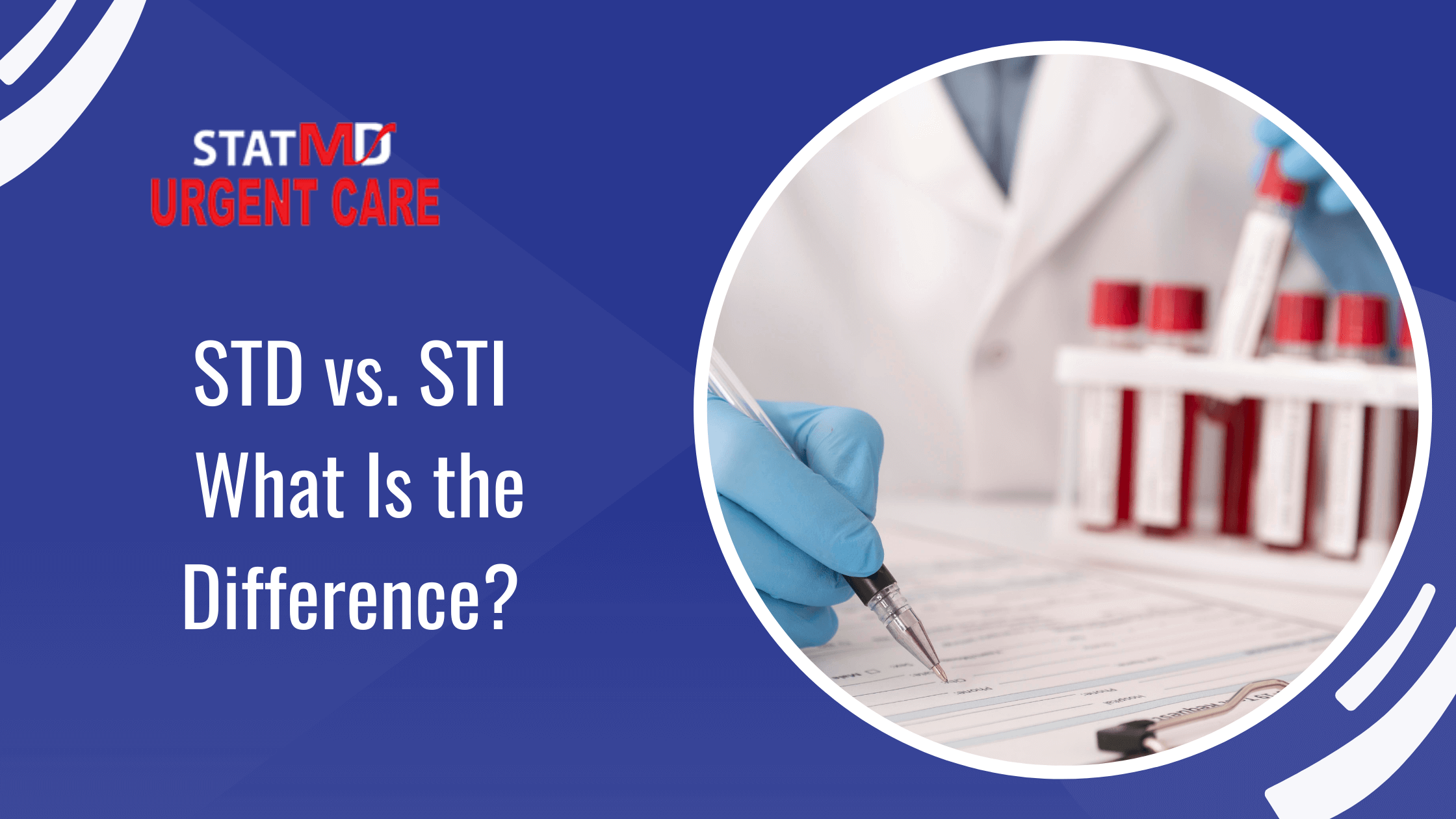
Flu Shots Now Available Don't Miss Out on Limited Supply!
For Young St: (661) 464-5000
For Panama Lane: (661) 464-5001

As both STDs (sexually transmitted diseases) and STIs (sexually transmitted infections) are acquired through sexual contact, people may use them interchangeably. STD refers to a disease caused by a specific microorganism and characterized by symptoms, whereas STI refers to an infection that can be either symptomatic or asymptomatic. You can seek appropriate medical attention and assistance as needed by understanding the differences between the two and their symptoms and causes.
STIs are infections that spread by unprotected intercourse, breastfeeding, pregnancy, childbirth, and infected blood or blood products. If left untreated, STIs can escalate and impact your health, causing cardiovascular and neurological diseases, stillbirths, infertility, etc.
Untreated or undetected STIs cause STDs. Though not all STIs progress into STDs, if an infection persists, it can lead to cancers, genital warts, pelvic inflammatory disease, etc.
Some differences between STDs and STIs include:
Though STDs and STIs are distinct, the term “STI” is often used because it has less bad connotation or humiliation than STD, which sounds a little embarrassing or degrading.
STIs occur through skin-to-skin contact, sharing needles with an infected person, or exchanging body fluids like blood. STDs will occur following an infection. If the organisms (pathogens) that cause the disease enter your body and begin multiplying, they disturb the normal body functions, causing a disease. However, all STIs will not progress into STDs, as some infections like HPV (human papillomavirus) ease on their own without causing health issues.
STIs and STDs are classified into three types based on their underlying causes, including:
If you are symptomatic to an STI, you may experience:
The symptoms of STDs vary according to the type of infection. While not everyone develops symptoms, for some, it may take days, weeks, or even years to experience the onset of symptoms. If you develop symptoms, your STI has aggravated into an STD.
While some symptoms of STDs are similar to the above, some may be different and more serious, which include:
Your doctor may recommend any of the following tests to diagnose your STI/STD:
You should visit your urgent care provider for STIs and STDs under the following circumstances:
You can reduce your risk of STIs and STDs with the following practices:
As the underlying causes and symptoms of STIs and STDs vary, understanding the difference is crucial to making informed decisions concerning the treatment. By practicing safe sex and getting regular screenings, you can reduce your risk of contracting and spreading STIs while taking control of your sexual well-being.
If you are looking for trusted urgent care for STD or STI near you, look no further than StatMD Urgent Care With our compassionate healthcare professionals, we provide top-notch care and support for all your sexual health concerns. From physical examination to diagnosis and treatment, we offer comprehensive care for STIs and STDs. Contact us today for prompt STI or STD testing in Bakersfield.